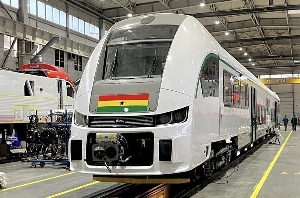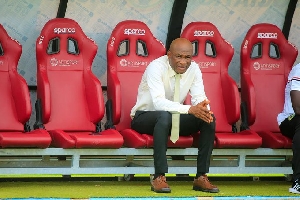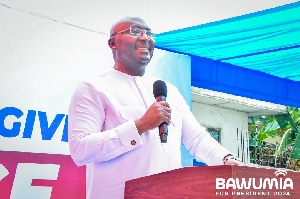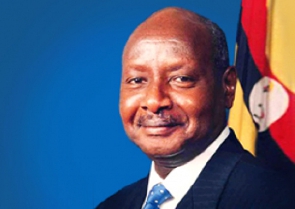Opinions of Tuesday, 26 March 2013
Columnist: Kofi, Laala Anum
Kufour mobile phones, Mahama solar energy
President J. Kufour promoted the mobile phones industry; will President J. Mahama promote solar energy to mitigate the ongoing ‘dumso, dumso’?
According to the World Bank, ‘Access to energy is critical for economic growth and poverty alleviation; no country in the world has developed its economy without abundant energy supplies. Today, chronic power shortages plague 30 African countries and only one out of four Africans has access to electricity. The entire installed generation capacity of 48 Sub Saharan African countries is 68 giga-watts, no more than Spain’s’.
This was contained in a report, “Africa’s Infrastructure: A Time for Transformation”, a release from the Accra Office of the World Bank (November 2009).
However, every minute, the sun bombards our continent with enough energy to power our needs for a whole year. Yet only a fraction of one percent of all the electricity fed into the national grids in developed countries originates from sunlight.
This percentage is even much lower in the developing tropical countries, in spite of the fact that our part of the world is more suited for solar energy applications - we have more sunshine than the other parts of the earth, and we should therefore be making more use of this solar resource!
The solar energy potential:
In brief, solar energy is the radiant light and heat from the sun that has been harnessed by humans since the dawn of history, using a range of ever-evolving technologies. Solar radiation, along with secondary solar resources, such as wind and wave power, hydroelectricity and biomass account for most of the available renewable energy on earth.
Once converted, its uses are limited only by human ingenuity; a partial list of solar applications includes home lighting and powering of household appliances, backup sources of power in schools, hospitals, police stations, traffic control and street lighting, telecommunications – for the mobile phone industry, police, army and emergency services, for radio/TV re-transmission stations, well water and small-scale irrigation pumping, aviation lights, railway signals, for small-scale desalination etc. The drawback of solar energy is that it is available for only up to12 hours daily in Ghana; however, solar energy could also be combined with other energy sources, such as the use of wind turbines (wind energy) to form a hybrid system to increase the availability of power.
The evolving and improving solar PV technology:
The technology for capturing the sun - solar Photovoltaic (PV) energy - is getting more efficient, and at the same time cheaper. The efficiency (percentage of conversion of the incident light to electricity) of the panels is improving daily, currently hovering around 17 to 20 percent; but, the latest multi-junction solar cell technology has succeeded in increasing the efficiency of solar cells up to 40%, while using only 10 percent of the silicon base material. Thus, the present crop of solar panels can even capture the sun’s energy in cloudy, dull or rainy weather.
Trends in solar cell development and production have led to a steady decline in the cost of solar PV systems, making it more competitive with generators and other conventional power sources than in the past.
Extending the grid to isolated communities can be expensive; this makes solar based electricity the most attractive option for rural areas, and is an effective way for Ghana to expand electrification to all our people. A solar PV system that is well designed, properly installed, and well maintained will operate for more than 20 years. The basic PV module has no moving parts and can last for more than 30 years.
The government donates solar lanterns to selected communities; how about legislating solar for all?
Following the recent increases in the price of petroleum products and the ongoing electricity crises, locally described as ‘dumso, dumso’, the government has donated solar lanterns to selected rural communities to mitigate the increase in the price of kerosene. By this action, President Mahama has shown some inclination to the mass use of Solar PV energy, wind and other Renewable Energy Technologies (RETs) in our energy mix. RETs in general are considered more sustainable and environmentally friendly than conventional energy systems that are based on fossil fuels (oil, gas, coal). By being small-scale and decentralized, they are usually considered to be less expensive because of the reduced cost of transporting and distributing fuel and energy. In most cases the RETs produce energy at the source for use in the immediate vicinity; also, most countries in the tropics usually average over 250 days of sunshine, which implies that power is hardly interrupted.
The RETs have held promise for Ghana’s development for many years; however, efforts to make this promise a reality have not generally been successful. During times of energy crises–when there is prolonged drought in the catchment basin of the Volta dam, or when the world oil prices increase sharply–there is sudden interest in RETs as possible alternatives to our dependence on the national electricity grid. This interest wanes as rapidly as the crisis is resolved.
Solar and other RET systems usually involve high initial costs, but the investments usually pay off several times over in the long run. Indeed, there are many Ghanaians, especially those in the diaspora, who can afford to bring in Solar PVs and other RETs, should a government policy be promulgated – to exempt the payment of import duties and taxes for such systems. In view of the prevailing power cuts, many Ghanaians, who can easily afford the systems, are especially keen to ensure constant availability of electricity in their homes and for their relatives and are therefore seeking solar and RET solutions.
Business minded Ghanaians can even jump on a tax-exempt policy to create opportunities in the provision of energy services for individuals and localities. A feed-in tariff – same, or close to what consumers currently pay for ECG power consumption - could be established to encourage individuals, to recoup their investment in the systems, while contributing their quota in energy production for the country.
In the long run, a large proportion of the population could be weaned off the ECG supply, and rather become net producers of energy for industries and other key establishments which form the bulk of consumers of energy in the country.
The President and Parliament could therefore consider legislation that would encourage the banks and other finance institutions to avail homeowners and credit-worthy Ghanaians of adequate finance to acquire and install solar, wind and other RET systems at stipulated minimal interest rates; the simple argument is that solar, wind and other RET systems are good collaterals, in view of their long life-spans. But, more importantly, what President Mahama could do to leave his legacy on this issue, apart from removing all import duties on solar, wind and other RET systems – solar panels, batteries, charge regulators, invertors, etc, is to mandate a preferential one-day, one-stop shop clearance arrangement for all solar and related systems the ports of entry.
Proposal to allow each Ghanaian to import up to 1000Watts (1kW) of solar equipment – free of customs duties:
My humble proposal to government is that, each Ghanaian, who can afford it, should be granted the option to import up to 1kW of solar-wind equipment (solar panels, charge controllers, inverters, batteries, costing up to US Dollars 3000) free of customs duties and taxes – for use in our homes and to add power to the national grid.
Imagine if every Ghanaian is so allowed to import up to 1 kW of solar energy systems and other RETs (1000W could power 6x20W bulbs plus 1x280W fridge plus 2x100W fans plus 1x400W freezer); with such a scenario, about a million or more Ghanaian could be ‘grid tied’- that is, each is capable of uploading about 1 kW at peak times during the day to the national grid - that would be a cool 1000MW, or about equal to the installed capacity (1020MW) of Akosombo.
As a matter of fact, peak power demand on the grid usually occurs during the day time, and grid-tied solar energy systems could supply that demand. Solar PV systems do not necessarily require batteries; but, in our situation, individuals would want to be completely independent of the grid; so, each would need to store some of the energy in a bank of batteries to cater for the situation when the ECG power goes off, or for night time use. When your home is generating extra power during the day, your grid-tied system could supply the extra power to the national grid and make your electricity meter credit you by spinning backwards, thus reducing your electricity bill. ECG power could then be better reserved for industries and other big power consumers.
Often overlooked is the fact that a lot of power is lost in the transmission lines; if we could decentralize the power distribution system, so that each individual home is not necessarily connected to the grid, the government could save lots of money in the extension of the grid to the remotest parts of the country. Outside our big cities - where demand for electricity per capita is high, most of the rural consumers of electricity use it only for lighting and low-consumption devices, such as fans, radios and television sets. These applications can easily be served by decentralized solar or other RET power sources.
As a historical analogy, one should recall that during the advent of the early computing era, scientists and students used to rely on huge mainframe computers, until the IBM PC was introduced - this eventually revolutionized the computing industry. Even though the PC was less efficient than a mainframe computer, it distributed the computing power among millions of people, thus effectively increasing overall productivity and also invigorating the economy – so will the solar systems affect our economy!
President Kufour’s telecoms versus President Mahama’s solar systems:
Almost every Ghanaian adult owns or has access to mobile phones – thanks to the foresight and diligence of the NPP government under President Kufour, even if there are some residual debates about the wisdom of selling Ghana Telecom to Vodaphone. This has, to a large extent, eased the communication bottleneck between and among Ghanaians of all categories for business, commercial and inter-personal transactions. In the beginning, the initial costs for the communication handsets were astronomical, and way beyond the affordability of most ordinary Ghanaians; but due to improvements in technology which saw the downward spiraling in the cost of the handsets, and the invitation and opening up of the competition among the various mobile companies – which was encouraged by the government – plus the near removal of all subsidies and taxes on mobile phone equipment, especially, the cheapest sets from China, it appears all is well with our tele-communication front.
Now that Ghanaians are experiencing shortfalls in electricity production, due in large part to the growth in the economy and the explosion in the country’s population, particularly in the urban areas of Accra, Kumasi, Takoradi, Tamale, Cape Coast, etc. it would appear that it is now time to harness the power of the sun, the wind and other RETs as supplements to our energy needs.
Every Kweku and Ama plugs his/her TV set, radio, fridge, microwave oven and other electrical gadgets into the ECG’s electricity outlet and expects to be satisfied immediately. What we have failed to foresee is that, as the economy expands, as the population grows, and as each of us is more able to afford increasing number and variety of gadgets and devices, which we buy cheaply at the Melcoms and other shopping centres, we would need to make more energy available (the annual growth in electricity consumption in Ghana is between 10 to 12%). This situation is similar to making more water available to our teeming urban populations - to avoid water shortages, two solutions quickly jump into mind at the individual level, namely, to promote rain-water harvesting by installing roof gutters (to channel water into big poly-tanks or wells), in the case of water, and as argued above, the government should make it easy for every Ghanaian to harvest solar energy! So, with some investment, one may be able to live independently of the mains electricity and water lines.
Other RET energy systems for consideration in our energy mix:
Concentrated Solar Power (CPS) - towers - The government should also consider the investment in CPS systems, as exemplified by similar establishments in the USA and Spain; large heliostat mirrors (each about 120 square meters) turn so as to keep reflecting sunlight toward the top of a 115 meter high tower where a solar receiver and a steam turbine are located. The turbine drives a generator, thereby producing electricity.
The northern regions of Ghana could be considered for the establishment of such facilities; government could request for training of engineers and technical staff in the construction, use and maintenance of CPS from the US or our EU partners. Europe’s first commercial CSP plant was inaugurated on 30 March 2007, near the sunny southern city of Seville, in Spain. The 11MW plant, known as PS10, produces electricity with 624 large movable heliostat mirrors - this is the first of a set of solar electric power generation plants to be constructed in the same area that would total more than 300 MW.
Concentrated solar power - troughs:
Parabolic mirrors are arranged, such that the mirrors mechanically rotate and follow the sun, thereby focusing the sunlight on receiver tubes - the receiver tubes are positioned along the focal line of each parabolic mirror. The reflected sunlight is very intense and heats a fluid flowing through the tubes to very high temperatures; the very hot fluid is then used to heat water to create steam for a conventional steam turbine generator to produce electricity. Parabolic solar troughs so far provide about 354 MW of energy from the California desert - this came about, mainly in response to the 1970s oil-crises, as the USA showered tax breaks and investment incentives on alternative energy.
An improved innovation of the solar trough system uses molten salt - the heat from the molten salt extends the energy availability of the system for 6 more hours per day, say up to 18 hours of energy availability in Ghana.
In July 2010, President Obama, announced that the US Government would provide a $1.45 billion loan guarantee, through the Stimulus Act, to the Solana CSP Plant in Arizona for the construction of CPS plants. The project was started in late 2010 and when completed in mid 2013, the 280 mega-watt plant will be the largest CSP plant in the world. Ghana should be taking note and seek assistance to commence this technology on smaller scales.
Bio-fuels: The government should encourage the production of bio-fuels; the seeds of the jatropha plant yield oil that can be burned in almost any diesel engine (Prof. Frimpong-Boateng has been promoting this bio-diesel resource); also, we should emulate the Brazilian example of sugarcane ethanol bio-fuel production, for use in cars and other vehicles – as promoted by Dr. Abu Sakara, the CPP candidate in the recent elections.
The nuclear energy option in the energy mix by the year 2025 or beyond:
Fail-safe and accident-free nuclear power plants will be the logical choice for Ghana, to boost the available energy for our fast expanding population and industrial production in the future. Nuclear power plants require huge initial investments, but in the long run, the plant becomes the most economical. Nuclear power planning, site selection and plant procurement takes a long time – the lead time is usually between 10 to 14 years. The down side is the nuclear waste, security and safety concerns.
With lessons learnt from the Chernobyl and Fukushima accidents, we could include fail-safe nuclear reactors (no loss of coolants - such as what happened in Fukushima, and no dangerous increment in core reactivity - such as happened in Chernobyl) in our energy mix by the year 2025.
One such fail-safe nuclear reactor being developed is the fourth generation High Temperature Reactor (HTR) - which is synonymous with the Pebble-Bed Modular Reactor (PBMR); this technology was first developed in Germany (1967 to 1988), and later licensed to South Africa (1999 to 2010) as the PMBR, and to China, since 2000 as the HTR. The HTR-PBMR in China is now in advanced stages of testing and construction; each module of the reactor would produce about 100MW of thermal energy; many modules could be combined to produce the total generating power. By 2050, China plans to deploy as much as 300 giga-watts of reactors of which PBMRs will be a major component. The nuclear waste from the PBMR fuels are well contained and shielded in the centre of the billiard-sized spherical fuel balls (about 5g of fuel per ball); should Ghana procure PBMRs under a turn-key arrangement in the future, we could, for nuclear safety reasons, include clauses in the procurement agreement to return any wastes generated to the suppliers for safe storage or disposal.
For further information on the PBMRs, see: http://www.iaea.org/NuclearPower/Downloadable/Meetings/2011/2011-12-05-12-09-WS-NPTD/Day-4/27_CHINA_Sun_HTRPM_SMRDec2011.pdf
By: Laala Anum KOFI
BS-SEAL, Tema
LaalaKofi@hotmail.co.uk












